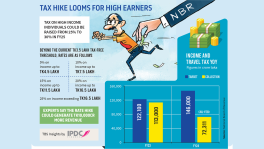Bangladesh now self-reliant in rice, fish production
Commercial production of fish, meat, milk and eggs witnessed a robust growth in this decade in line with growing demand


Bangladesh – a predominantly agricultural country – has achieved self-sufficiency in fish, meat, rice and vegetable production in the last 10 years, thanks to a set of favourable government policies.
Commercial production of fish, meat, milk and eggs witnessed a robust growth in this decade in line with growing demand.
These items are primary means of meeting the nation's demand for protein.
Substantial investments have also helped some of these sectors grow into big industries that are preparing to export their products after meeting local demand.
Poultry industry grows 200 percent
Data from the Department of Livestock Services and Bangladesh Poultry Industry Central Council show that the size of the poultry industry was Tk10,000 crore in 2010.
This has leapt to nearly Tk30,000-35,000 crore at present.
The Bangladesh Poultry Industry Central Council says as many as 1.65 lakh people are involved in meat and egg production, while the Department of Livestock Services claims there are 81,614 poultry farms in the country.
According to the Bangladesh Agricultural Research Council, each person has a demand for 120 grams of meat every day. This demand was met in 2017.
Bangladesh produced 75 lakh tonnes of white and red meat in the 2018-19 fiscal year.
The Ministry of Fisheries and Livestock notes that the country produced 12.60 lakh tonnes of meat in the 2009-10 fiscal year. This means meat production increased nearly six times in 10 years.
However, the increase in production could not cap beef prices, which doubled in 10 years to reach Tk550 per kilogram.
Dr ABM Khaleduzzaman, assistant director of the Department of Livestock Services, said, "Regular training of farmers, loan facilities and tax holidays have helped the sector balloon fast. Producers are now preparing to go for export after meeting local demand."
Meat producers say the poultry sector started receiving private investments in the 1990s. The industry attracted small and medium investments with the government waiving poultry sector taxes in 1996.
Big investors with modern technologies made an entry into the booming poultry business after 2000.
Avian influenza – a disease caused by infection with avian (bird) influenza (flu) Type A viruses – hit the sector in 2007, causing many farmers to suffer losses. They could not recover the damage until 2009.
The poultry sector acquired permission to import avian influenza vaccine in 2013. Meanwhile, the government in 2008 issued the National Poultry Development Policy, keeping import of poultry accessories out of the purview of taxation.
Substantial increase in milk, egg production
Though production of milk and eggs has also increased significantly in the last decade, it is still below demand.
Each person has an annual requirement for 104 eggs, while supply stands at 103 currently.
Egg production was 1,711 crore pieces in the 2018-19 fiscal year, up from 574 in 2009-10.
According to the Food and Agriculture Organisation, each person has a demand for 250 grams of milk every day. This estimate suggests the need for an annual production of 152 lakh tonnes of milk while the total production in the last fiscal year was 99 lakh tonnes.
Milk production was 23 lakh tonnes in the 2009-10 fiscal year.
Apart from state-owned Milk Vita, private investments are pushing the dairy sector forward. However, the country is yet to shake off its dependence on milk imports.
In the last 10 years, milk production increased three times. Milk Vita has been in production for a long time; private companies like Aarong, Pran, Akij and Aftab stepped in between 2005 and 2015.
The government introduced the National Livestock Development Policy in 2007, while a draft of the National Dairy Development Policy was finalised in 2016.
Currently, there are more than 68,000 registered dairy farms across the country. Apart from supplying to Milk Vita, commercial brands are collecting milk from root-level farmers.
A Tk4,000 crore project of the World Bank titled Livestock and Dairy Development Project is also expected to boost meat and dairy production.
Dr Abdul Jabbar Shikder, director general of the Department of Livestock Services, told The Business Standard that the dairy sector is growing rapidly although the country currently lags behind in egg and milk production.
He hopes the World Bank project will play a vital role in meeting the demand for milk.
Dr Nathu Ram Sarker, director general of the Bangladesh Livestock Research Institute, said the institute is prioritising self-sufficiency in nutrition as the country has achieved self-reliance in food production.
"Production of milk and eggs is growing faster than that of meat. We are working to speed up the process further," he added.
Bangladesh third in inland open fisheries
Time was when inland open water fisheries dominated the local fish market. Today, however, inland culture of fish occupies 56 percent of the domestic market.
The Department of Fisheries says a total of 43 lakh tonnes of fish were produced in the 2018-19 fiscal year. The production was 29 lakh tonnes in 2009-10.
According to a report of the Food and Agriculture Organisation, Bangladesh stands third in inland open fisheries and fifth in inland fish culture in the world.
Each person has a demand for 60 grams of fish per day while the supply is 62.58 grams.
Dr Mohammad Zillur Rahman, deputy director of the Department of Fisheries, said the fish Pabda once was priced at Tk1,200-1,300 per kilogram.
"However, the price has gone down to Tk400-500 now. This was possible due to large-scale fish farming."
More than 1,000 private hatcheries are producing and supplying fish fries across the country. Though carp fish once dominated the inland fish culture, more and more local species are gaining popularity.
Government officials have been narrating a series of initiatives, claiming that they have hugely contributed to fish production.
Hilsa has been playing a key role in overall fish production in the last two years. The country saw 4.98 lakh tonnes of hilsa production in the 2017-18 fiscal year, which rose to 5.17 lakh tonnes in the next financial year.
Marginal increase in rice production
Bangladesh achieved self-sufficiency in rice and vegetable production a couple of years ago. Rice had to be imported only during periods of natural calamities.
Despite this self-reliance, rice production increased only slightly during the last decade.
The Department of Agricultural Extension says the country produced 3.86 crore tonnes of rice in the 2018-19 fiscal year, which was possible due to a bumper production of Aush and Aman.
Rice production was 3.38 crore tonnes in the 2011-12 fiscal year.
The annual demand for rice is 3.5 crore tonnes.
In 2017, floods ruined the crop twice, rendering the rice market unstable. The government had to waive 28 percent rice import tax, paving the way for the import of 60 lakh tonnes of rice to calm the domestic market.
Many argued that the impact of the import affected Boro farmers even during the last season as they did not get fair prices.
The government approved the export of 2 lakh tonnes of rice this year owing to the production surplus. Some private companies are currently exporting this Bangladeshi staple.
Agriculture Minister Dr Abdur Razzak told The Business Standard that Bangladesh has achieved tremendous success in food production in the last 10 years.
"We are now self-sufficient in producing food grains, including rice, and vegetables. Some items are even being exported," he said.
The minister said being able to export food after meeting the local demand is a huge achievement for the country.
"There is still a shortage in onion production but we will achieve self-sufficiency in that too," he added.
According to the Department of Agricultural Extension, Bangladesh had a production target of 4.15 crore tonnes of food grains in the 2018-19 fiscal year. Exceeding the target, the production was 4.32 crore tonnes.


 Keep updated, follow The Business Standard's Google news channel
Keep updated, follow The Business Standard's Google news channel
















